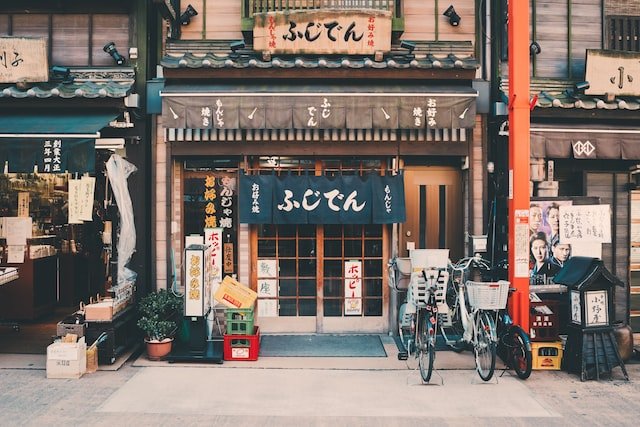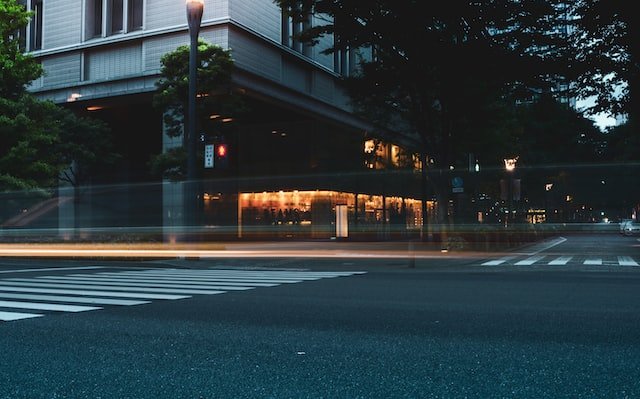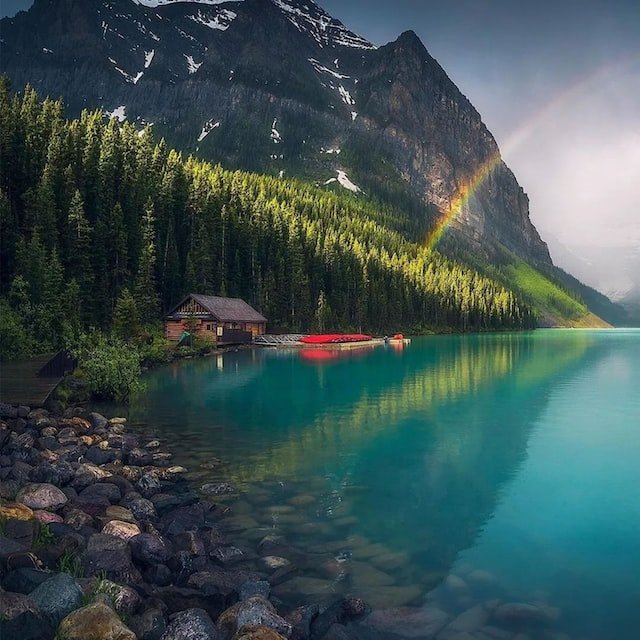We have all heard about aspect ratio in photography. We’re always using it and referring to it without even realizing that we’re doing it. This is for you if you want to know about aspect ratio and clear all the doubts around it. Please grab a cup of coffee, and let’s get started.
Definition
The aspect ratio deals with the ratio between the width and height of a photo. It’s always expressed as a set of two numbers separated by a colon. You must have heard about 3:2 or 16:9 or 1:1 before. These relate to a ratio of the photo’s width to its height or a ratio between the longest side and the shortest side.
When the aspect ratio is expressed as 2:3 or 3:4, that usually means the camera has been held in the portrait orientation, which turns the aspect ratio over. Please note the aspect ratio between the height of the image and its width is not an indication of the actual size of the image. It just states the proportion in which the dimensions of the image (i.e., height and width of the image) are.
In many cases, the natural aspect ratio is the sensor’s dimensions. As a general rule, most photographers choose to shoot at a resolution of 3:2. This is if they’re shooting in the 35mm format or the APS-C format. This is in line with the aspect ratio of the 35mm format sensor, 36mm by 24mm (3:2), and the APS-C sensor, 24mm x 16mm (3:2).
Let’s take an example.
The Canon R6 Mark II has an effective resolution of 24.2 MP. It can shoot images with a resolution of 6000 x 4000 pixels. The aspect ratio of the images is 3:2.
This, however, is different from shooting videos, where the latest trend is to shoot in a 16:9 aspect ratio. However, aspect ratios change based on user demand and the latest trend. And photography is no different in that regard.
Most common aspect ratios for photos
Let’s take a look at the most popular aspect ratios for photography. The aspect ratio of your images depends on a few factors. One of those is the camera’s sensor size and the camera type. For example, if you’re using a full-frame camera, the most natural aspect ratio is 3:2. Even the older 35mm film cameras use the same aspect ratio.
The 3:2 aspect ratio is also popular among professional photographers because it is the closest to the Golden Ratio. For those unaware of the Golden Ratio, it’s a much-used mathematical ratio that existed way before the advent of cameras or the technology of photography. The Golden Ratio is 1.618: 1.
If you use a 16:9 or a 1:1 ratio, you must crop out a considerable amount of the image information to comply with the particular aspect ratio.
The same applies to any other camera format, including micro four-thirds cameras. In the case of micro four-thirds, the most natural aspect ratio is 4:3. Let’s take an example. The OM System OM-1 is a micro four-thirds system camera, and the sensor size is 17.4 x 13mm. That’s an aspect ratio of 4:3. If you shoot in a 4:3 aspect ratio, that would be perfect for that camera. But if you shoot in 16:9 or 3:2, you lose out on information.
Several point-and-shoot and medium-format cameras also use the 4:3 aspect ratio.
Many of the vintage aspect ratios depended on the kind of camera they used. For example, the older large and medium format cameras used the 1:1 aspect ratio. This is true even today. When 35mm format cameras were introduced, the 3:2 aspect ratio became popular. That aspect ratio is still used today.
5:4 is a common large and medium format image aspect ratio. It’s also used in printing large formats such as 8 inches x 10 inches and 16 inches x 20 inches.
Speaking of aspect ratios, 16:9 is a very popular choice as an aspect ratio for videography. It’s seldom used in photography. YouTube videos use this same aspect ratio. However, I am sharing this for academic reasons. The 16:9 aspect ratio is much wider than the 4:3 and 3:2 aspect ratios. Also, this is popular among video shooters because modern widescreen TVs and computer monitors displays use the 16:9 aspect ratio. It is very popular though among photographers who want to capture a cinematic look. The wider aspect ratio is generally used in filming.
Some rare cameras offer an aspect ratio of 3:1. This is almost always used for shooting panoramic shots. The Hasselblad X1D is a medium-format camera that uses this aspect ratio.
Original aspect ratio vs. choosing a cropped aspect ratio
Many cameras offer the option to choose an aspect ratio other than something natural to the camera. We have just learned that the natural aspect ratio is the one that follows the proportion of the sensor size. The aspect ratio that the photographer chooses to use will depend entirely on what the camera offers in the first place. Not all cameras allow you to change the aspect ratio. Some cameras do. Choosing the aspect ratio would depend on the camera and the make. So I am not going into the details of choosing the aspect ratio here.
Let’s say that you’re using the Nikon D850. It allows you to choose between 3:2, 1.2, 5:4, and 1:1 aspect ratios. These are the original or default aspect ratios on the D850. However, please note not all these aspect ratios are natural to the camera. Except for the 3:2 aspect ratio, the rest are cropped from the full-frame aspect ratio. When you use one of these non-native aspect ratios, you not only crop the image but also lose out on image resolution.
Suppose you don’t want to lose out on image information. In that case, you’re better off shooting in the natural aspect ratio and, simultaneously, using framing techniques to ensure that all of the elements you want to include in the image are there naturally.
In some situations, however, it becomes unavoidable, and you have to change the aspect ratio during post-processing. This could be because of a change in the end use of the image or changes in the final print aspect.
Adjusting the aspect ratio in the camera
You can adjust the aspect ratio of your images in two main ways. You can choose to adjust the aspect ratio in the camera when shooting, or you can choose to edit your images during post-processing and adjust the aspect ratio.
The actual process of adjusting the aspect ratio will depend on the camera type and the make of the camera. The option to edit the aspect ratio on Nikon cameras is available under the Photo Shooting Menu option. Just choose the “Choose Image Area” option, and you will be presented with several aspect ratios that you can shoot with.
Remember that not all aspect ratios are native to the camera. If you choose an aspect ratio not native to the camera, there will be cropping in images.
If using a Canon camera, navigate to the “Shooting Menu.” Under that, look for “Crop/aspect ratio.” You will find a few aspect ratio options depending on the camera that you’re using.
Adjusting aspect ratio during post-processing
The second option to change the aspect ratio is to do it during post-processing. It would be much easier if you shot the original image in the natural native aspect ratio of your camera. This will give you the highest available resolution to play with. Even after you change the aspect ratio of your image, you’re left with enough resolution for a standard size print if you wish to print that is. There are many common print sizes, such as 4 x 6 inches, 8 x 10 inches, and 16 x 20 inches.
Every image editing software allows you to edit your images and change the aspect ratio. Lightroom, e.g., gives you the option to do it from the quick Develop option under the Library menu. Select the image(s) you want to edit, and then click on the Crop Ratio option to edit the aspect ratio.
There are a ton of other editing software you can use, and each has its process of changing the aspect ratio. Most of them use the crop tool to achieve this. But it also has the effect of reducing the image size.
Adjusting aspect ratio in mobile phones
These days the lion’s share of photos are shot using a smartphone. Thankfully most smartphones have a built-in option to change the aspect ratio of your photos. The primary aspect ratio options are 4:3, 16:9, and 1:1 if you’re shooting in landscape mode. In the portrait mode, it becomes 3:4, 9:16, and of course, you have the 1:1 option. Of course, these options are not limited to any one platform. These are available on iPhones as much as on Android devices. You can alternatively use smartphone cameras, and they offer the same different ratios.
Which is the best aspect ratio?
There is no easy way to answer this question. There is no right aspect ratio that works in every situation. The specific aspect ratio you choose will depend on the image’s end use and the camera you use. To a large extent, it also depends on the kind of shot that you’re framing.
If you’re shooting a landscape image, you would be best served using the 16:9 aspect ratio. This is because, with a 16:9 aspect ratio, you can shoot a wide panoramic aspect that perfectly captures a landscape scene.
On the other hand, if you do decide to change the aspect ratio of an image later on and use a 4:3 or a 3:2 aspect ratio, you do not have room for manoeuvring. You will have to crop out large parts of the image, which may leave out exciting aspects of the photo.
In the same way, if you’re shooting a portrait image, you should use the 3:4 aspect ratio. If you can’t shoot with the 3:4 aspect ratio, use the 2:3 ratio and leave out space around the subject. This will ensure that you’ve space to crop and change the aspect ratio during post-processing.
The purpose of your images also determines the correct aspect ratio. Social media is one area that needs to be mentioned here because most images land up in social media posts. Social media platforms have different aspect ratios of choice. The most popular image-oriented social media platform is Instagram. And Instagram has different aspect ratios for feeds and posts.
All Instagram feed images are cropped to an aspect ratio of 1:1. It is known as the square format. I don’t recommend that you shoot for the aspect ratio of the Instagram feed because that will lead to a loss of image data. Instead, shoot in the highest resolution native aspect ratio and then upload to Instagram. The best resolution for uploading to an Instagram feed is 1080 pixels by 1080 pixels.
Instagram sizes down images from more than 1080 pixels to 1080 pixels, so there is no real advantage of uploading very high resolution on Instagram. As long as the image is between an aspect ratio of 1.91:1 and 4:5 (standard aspect ratios on Instagram) with a height between 566 pixels and 1350 pixels and a maximum width of 1080 pixels, Instagram will retain the maximum resolution. If the aspect ratio of Instagram doesn’t support the image, it will be cropped to the closest aspect ratio.
The composition you’re trying to achieve often dictates your aspect ratio. I have already mentioned how the 16:9 aspect ratio is so popular for landscape photography. Even though it’s not a native aspect ratio and results in a loss of resolution, the 16:9 aspect ratio is sometimes seen in landscape photography.
In the same way, when you’re shooting portraits, you would prefer to shoot in portrait orientation, which involves using either the 2:3 or 3:4 or even a 4:5 aspect ratio. Therefore, whether you’re shooting in landscape or portrait orientation has a big impact on the aspect ratio you choose.
Looking to buy a camera? take our quiz put together by the team here to determine which camera is best suited to you. https://photographyrevision.com/which-camera-should-i-buy/






Comments are closed.